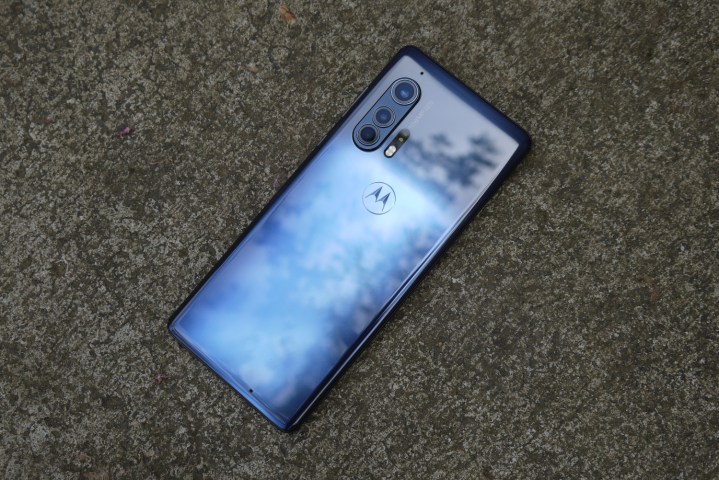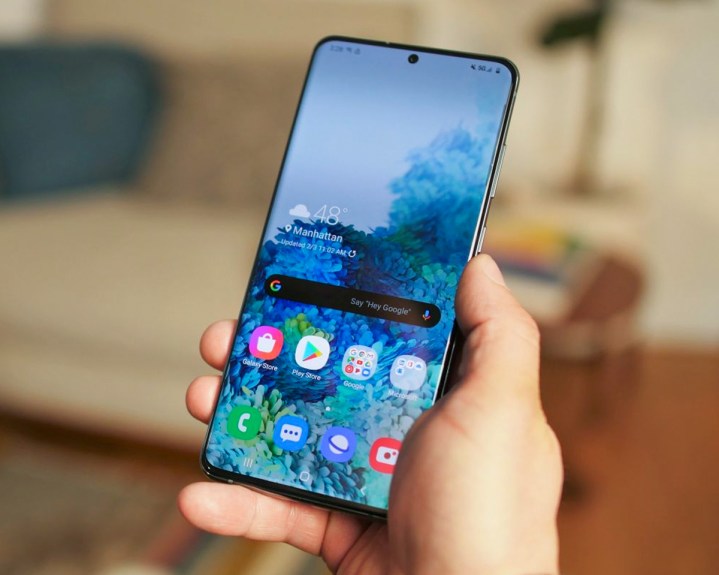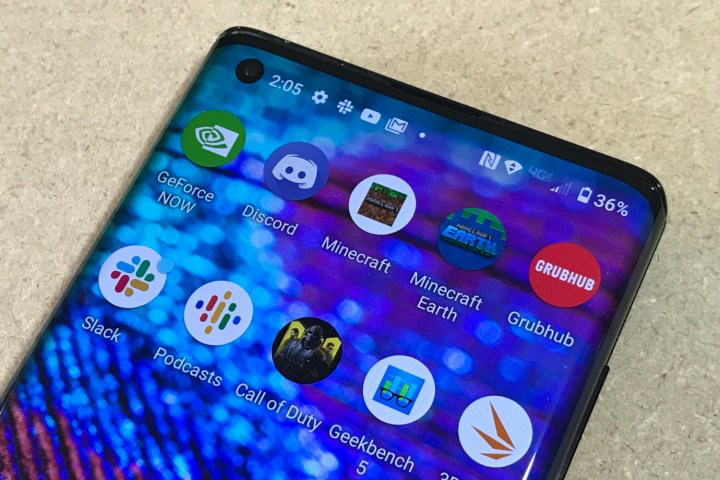Android owners are spoiled for choice when it comes to lavish premium smartphones. Not only does the current Android generation include excellent mobiles from OnePlus, Huawei, and Google, but it also offers the Motorola Edge Plus and the Samsung Galaxy S20 Ultra. These are two of the biggest and most powerful smartphones you can buy right now. They combine gorgeous displays, gigantic batteries, great cameras, and 5G support, and they truly look like top-of-the-line flagships.
Assuming you’re interested in buying one of these super smartphones, you may find yourself asking: Which one is best? Just for you, we compare the Motorola Edge Plus and Samsung Galaxy S20 Ultra across six all-important categories. We examine their displays, performance, cameras, software, special features, and prices, weighing up which one is the better flagship Android smartphone overall. Even if you don’t necessarily want our chosen winner of this head-to-head, our rundown should help you form your own preference.
Specs
| Samsung Galaxy S20 Ultra | Motorola Edge Plus | |
| Size | 166.9 x 76 x 8.8mm (6.57 x 2.99 x 0.35 inches) | 161.1 x 71.4 x 9.6mm (6.34 x 2.81 x 0.38 inches) |
| Weight | 220 g (7.76 ounces) | 203 grams (7.16 ounces) |
| Screen size | 6.9-inch AMOLED | 6.7-inch OLED |
| Screen resolution | 1440 x 3200 pixels, 20:9 ratio (511 pixels-per-inch) | 1080 x 2340 pixels, 19.5:9 ratio (385 pixels-per-inch) |
| Operating system | Android 10; One UI 2 | Android 10 |
| Storage | 128GB, 256GB, 512GB | 256GB |
| MicroSD card slot | Yes | Yes |
| Tap-to-pay services | Google Pay, Samsung Pay | Google Pay |
| Processor | Qualcomm Snapdragon 865 | Qualcomm Snapdragon 865 |
| RAM | 12GB, 16GB | 12GB |
| Camera | 108MP, 48MP telephoto, 12MP ultrawide, 0.3MP time-of-flight rear, 40MP front | 108MP, 8MP telephoto, and 16MP ultrawide, time-of-flight 3D rear, 25MP front |
| Video | 8K at 24fps, 4K at 60fps, 1080p at 240fps, 720p at 960fps, HDR10+ | 6K at 30fps, 4K at 30fps, 1080p at 120fps |
| Bluetooth version | 5.0 | 5.1 |
| Ports | USB 3.2, USB-C | USB 3.1, USB-C |
| Fingerprint sensor | Yes, in-display | Yes, in-display |
| Water resistance | IP68 | No official rating |
| Battery | 5,000Ah
Fast charging (45W) Qi wireless charging (15W) |
5,000mAh
Fast charging (18W) Fast wireless charging (15W) |
| App marketplace | Google Play Store | Google Play Store |
| Network support | All carriers | Verizon |
| Colors | Cosmic Grey, Cosmic Black, Cloud White | Smokey Sangria, Thunder Grey |
| Prices | $1,4000 | $1,000 |
| Buy from | Samsung, AT&T, T-Mobile, Verizon, Amazon, Best Buy, Walmart | Motorola, Verizon |
| Review score | 3.5 out of 5 stars | 3.5 out of 5 stars |
Design, display, and durability

The Motorola Edge Plus stands out from the Android crowd when it comes to its design. It features what Motorola has dubbed the “Endless Edge,” which, in English, means that its touchscreen actually curves down to its sides, creating a waterfall-like cascade effect that’s visually impressive. While this gives the screen a distinctive and imposing presence, the Edge Plus’ appearance is tarnished somewhat by its thickness. Even though the Samsung Galaxy S20 Ultra is a notoriously large — and sometimes uncomfortable — phone, the Edge Plus is still nearly 1mm thicker. This additional thickness makes it a little unwieldy to hold and also undermines its modern, contemporary appearance.
The Galaxy S20 Ultra scores an even bigger win with its display. It has a 6.9-inch AMOLED screen, while the Motorola Edge Plus provides you with 6.7 inches of display. More importantly, the S20 Ultra’s resolution is noticeably higher, coming in at 511 pixels per inch as opposed to only 385 for the Edge Plus. Combined with a higher refresh rate of 120Hz, this allows the S20 Ultra to wow its users with incredibly bright and colorful images, and while the Edge Plus’ screen is good, it just doesn’t come close.
The Samsung Galaxy S20 Ultra also has an IP68 rating, indicating that it can withstand dirt, dust, and sand, and that it can survive submersion in water of a depth of 1.5m for a maximum of 30 minutes. By contrast, the Motorola Edge Plus doesn’t have an official IP rating, despite Motorola claiming that it has been internally tested to similar standards.
Winner: Samsung Galaxy S20 Ultra
Performance, battery life, and charging

The Motorola Edge Plus and Samsung Galaxy S20 Ultra are evenly matched performance-wise. The Qualcomm Snapdragon 865 powers both smartphones, while they both come with 12GB of RAM as standard. As such, they handle the latest apps and games with similar ease, although for an extra $200 you can buy an S20 Ultra with 16GB of RAM, making it even faster (and more future-proof). Paying this extra also gives the S20 Ultra 512GB of internal storage, while the Motorola Edge Plus comes with 256GB as standard. Both phones also provide the ability of topping up their internal memory to 1TB via the available SD card slots.
As far as daily lifespan goes, both the Motorola Edge Plus and the Samsung Galaxy S20 Ultra come with gargantuan 5,000mAh batteries. Batteries this large enable both phones to cope with a day’s heavy use without requiring a recharge, while lighter users can go for two or maybe even three days. However, one battery area in which the two phones differ is in charging. The S20 Ultra is compatible with 45W fast charging, while the Edge Plus offers fast charging only at 18W. In practice, this allows you to recharge much more quickly, if you happen to be in a rush.
That said, the 45W charger is an optional extra, while the same can be said for the 16GB of RAM. As a result, we’re going to call this round a tie.
Winner: Tie
Cameras

The Samsung Galaxy S20 Ultra and the Motorola Edge Plus both offer triple-lens camera systems supplemented by time-of-flight (depth) sensors. Interestingly, the main wide camera lens for both smartphones provides a whopping 108 megapixels.
Pixel binning means you’ll rarely use all 108 megapixels with both cameras, but they do allow for much more detail and dynamism in regular photos. The Edge Plus also has an 8-megapixel telephoto lens and a 16-megapixel ultrawide lens. As for the S20 Ultra, it has a bigger 48-megapixel telephoto lens and a 12-megapixel ultrawide camera. Nonetheless, more megapixels doesn’t necessarily mean better performance, and in practice it’s hard to discern a big difference between the S20 Ultra’s zoomed photos and those of the Edge Plus, for example. In addition, both camera systems aren’t quite as versatile or as consistent as those you might find on an iPhone 11 Pro or Google Pixel 4.
Likewise, the S20 Ultra allows you to capture video at 8K, but you’d need an 8K TV or monitor to view them. Consequently, even though the S20 Ultra’s camera system should be a little better in theory, many of its apparent advantages aren’t especially meaningful or practical, so this round is another tie.
Winner: Tie
Software and updates

As an Android smartphone, the Motorola Edge Plus unsurprisingly runs on Android 10. This introduces a number of subtle improvements for Android, including a new Dark Theme, improved notification management, and more privacy transparency.
As for the Samsung Galaxy S20 Ultra, it operates on Android 10 with Samsung’s new One UI 2.0 overlaid on top. It’s just as functional as Android 10 itself, but it makes the user experience a little easier, boasting such features as bigger app icons, a simplified Camera UI, and a native screen recorder.
However, while things are level as far as software is concerned, the S20 Ultra falls slightly behind as a result of Samsung’s reputation for being slow with updates. This might not necessarily be the case in the future, but for now, we’re going to give the Motorola Edge Plus a narrow win in this round.
Winner: Motorola Edge Plus
Special features

The Samsung Galaxy S20 Ultra and the Motorola Edge Plus are both compatible with 5G. More importantly, they’re both compatible with sub-6 and mmWave 5G networks, enabling them to take advantage of the fastest possible 5G speeds. However, while Motorola claims that the Edge Plus provides the “fastest 5G in the world,” it is currently available only with Verizon. This arguably limits its compatibility.
As noted above, the Motorola Edge Plus also comes with the “Endless Edge” sloping touchscreen. It looks great, while it has also been designed to receive notifications and provide gamers with virtual shoulder buttons, for instance. That said, the S20 Ultra provides a screen with much greater resolution and with a smoother refresh rate of 120Hz. It may not look particularly original, but the screen it provides is arguably the best on any smartphone.
Winner: Tie
Price and availability
The Samsung Galaxy S20 Ultra starts at a pricy $1,400, while you’ll have to pay around $1,600 for the version with 16GB of RAM and 512GB of internal storage. It’s available from all major carriers, and from such retailers as Amazon, Best Buy, and Walmart.
In its favor, the Motorola Edge Plus is at least $400 cheaper than the S20 Ultra. Unfortunately, due to an exclusivity deal, it’s currently available only from Verizon.
Overall winner: Motorola Edge Plus
The race between these two fantastic phones was as tight as it gets. The Samsung Galaxy S20 Ultra has technical advantages like its wider availability, lightning-fast charging and strong battery life, and striking screen. But in the end, the Motorola Edge Plus had – we have to say it – the edge.
Overall, although the Galaxy has some impressive features, the price is too big a downside, costing up to a whopping $600 more than the Motorola model. Most consumers will not be willing to shell out an additional $600 just for improved video and increased RAM, especially since the user experience across the board isn’t much better than the Motorola edge.
The Motorola Edge Plus is a superphone with its rock-solid specs, powerful camera, tireless battery, and attractive design. Priced at a reasonable $1,000, it’s a better buy overall.



